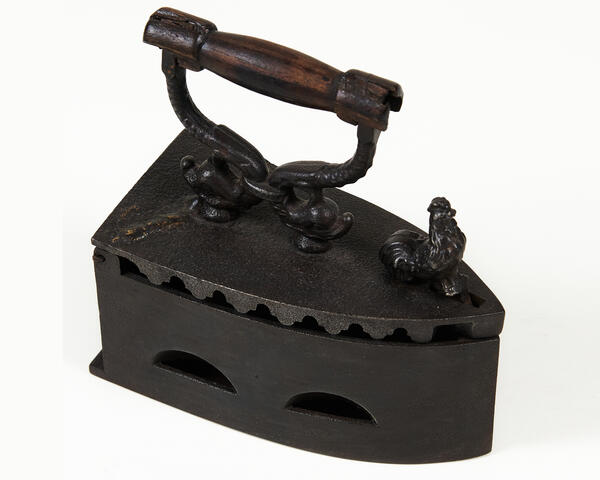People started using irons over two thousand years ago. Since then, the iron has evolved from a heated stone to an electric device with multiple functions. The first irons were fully made of metal and were heated in a fire, an oven, or on a stove. Of course, such irons had many drawbacks, including the iron handle that would overheat during the process. Later people understood that irons could be heated not only from the outside but also by charcoal inside them.
Charcoal irons were the most viable alternative to the irons heated in ovens. The main advantage of this device was that it allowed to do the ironing without any interruptions. Before, an iron would constantly cool down and become useless, and it was necessary to reheat it in an oven. The charcoal iron made it easier to maintain the necessary temperature. However, these irons were also much more expensive because their design was more complicated than that of the irons heated in ovens. The body, lid, lock, and handle were cast separately and assembled afterward.
Nowadays, not every museum visitor can answer the question of why a charcoal iron has so many holes. The answer is quite simple: the small holes under the lid were necessary for blowing out the hot air. The holes below, which resemble eyes, were necessary for air supply because charcoal requires oxygen to burn. Usually, there are two holes on each side, but you can also see examples of ‘three-eyed’ irons in the museum collection.
The ‘eyes’ are also the main disadvantage of this type of iron. Charcoal would crumble, fall out, burn through or stain the fabric during the operation. This happened especially often when people would shake the iron to improve ventilation.
However, eventually, the iron design was modified: it was equipped with a pipe and a special grid. Pipes improved the air supply and protected the user from hand burns by removing excess heat. The grid was placed under the charcoal, to prevent their contact with the soleplate and to avoid any overheated points on the iron’s surface. In general, ironing with a charcoal iron was more like a muscle-building exercise and as such was more often done by men.
Charcoal irons were the most viable alternative to the irons heated in ovens. The main advantage of this device was that it allowed to do the ironing without any interruptions. Before, an iron would constantly cool down and become useless, and it was necessary to reheat it in an oven. The charcoal iron made it easier to maintain the necessary temperature. However, these irons were also much more expensive because their design was more complicated than that of the irons heated in ovens. The body, lid, lock, and handle were cast separately and assembled afterward.
Nowadays, not every museum visitor can answer the question of why a charcoal iron has so many holes. The answer is quite simple: the small holes under the lid were necessary for blowing out the hot air. The holes below, which resemble eyes, were necessary for air supply because charcoal requires oxygen to burn. Usually, there are two holes on each side, but you can also see examples of ‘three-eyed’ irons in the museum collection.
The ‘eyes’ are also the main disadvantage of this type of iron. Charcoal would crumble, fall out, burn through or stain the fabric during the operation. This happened especially often when people would shake the iron to improve ventilation.
However, eventually, the iron design was modified: it was equipped with a pipe and a special grid. Pipes improved the air supply and protected the user from hand burns by removing excess heat. The grid was placed under the charcoal, to prevent their contact with the soleplate and to avoid any overheated points on the iron’s surface. In general, ironing with a charcoal iron was more like a muscle-building exercise and as such was more often done by men.



